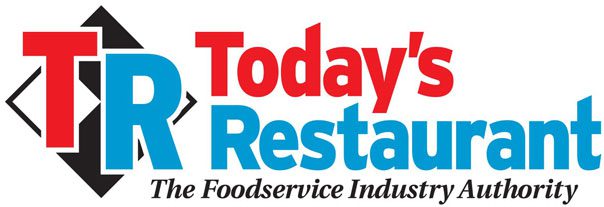
TRN Exclusive
Hurricane Preparedness Tips for Restauranteurs: Safeguarding Operations and Maintaining Profitability
By Stefan Burkey
Hurricanes pose numerous risks, including storm surges, wind damage, heavy rainfall and flooding. A significant threat to restaurants especially is the potential loss of power. Contrary to popular belief that some areas are immune to hurricanes, history shows otherwise. Since 1850, every part of Florida’s coastline has experienced at least one hurricane, so it’s important for restaurants to plan ahead.
Given the unpredictable nature of the Atlantic hurricane season, which the National Oceanic and Atmospheric Administration forecasts have been above-normal once again for 2024, having a comprehensive hurricane preparedness plan is essential for Florida restaurant owners.
Before a power outage
During a hurricane, access to fresh food, water and electricity may be disrupted for days or possibly weeks. Implementing a complete emergency response and communication plan is essential.
The most critical factor for restaurant owners is to ensure food safety in the absence of electricity or a cold source. Bacteria thrive in temperatures between 40°F and 140°F, making food stored in powerless refrigerators and freezers potentially hazardous if not properly managed.
To prepare for an approaching hurricane, restauranteurs should follow these steps:
- Elevate appliances and relocate food supplies:If possible, place refrigerators and freezers on cement blocks to lift them off the floor to protect against flooding. Move canned goods and other food items stored in the basement or low cabinets to higher ground.
- Group foods together:This helps maintain cold temperatures longer in both the refrigerator and freezer.
- Keep the freezer full:Fill empty spaces with frozen plastic jugs of water, bags of ice or gel packs to extend cold temperatures.
- Freeze perishable items:Freeze items you may not need immediately, such as leftovers, milk, and fresh meat and poultry. This will help them stay at a safe temperature longer.
- Stock up on both regular and dry ice:Ensure you have a large, insulated cooler and frozen gel packs or ice on hand, as well as dry ice in the event of an extended outage.
- Maintain an adequate supply of ready-to-eat foods:Keeping a healthy stock of canned meats, fruits, vegetables and juices as well as dry mixes, nuts and peanut butter may ensure your business can continue operating with minimal disruptions after a storm. These items do not require refrigeration, cooking, water or special preparation and can be utilized when other supplies are limited.
During a power outage
Keep refrigerator and freezer doors closed as much as possible to maintain cold temperatures and keep food in covered containers. In freezers, food in the front, door compartments, or small, thin packages will thaw faster than large, thick items or those placed in the back or bottom of the unit.
The refrigerator will keep food safe for up to four hours. If the power outage extends beyond this period, transfer food to a cooler filled with ice or frozen gel packs, ensuring the temperature remains at 40°F or below. Add more ice as needed when it begins to melt.
A fully stocked freezer will retain its temperature for about 48 hours, while a half-full freezer will do so for around 24 hours. If the power outage is expected to be prolonged, utilize dry or block ice. Twenty-five pounds of dry ice will keep a 10 cubic foot freezer below freezing for three to four days.
After a power outage
Thawed food can be safe for patrons to consume if it remained at refrigerator temperature and can be refrozen if ice crystals are still present. Never taste food to determine its safety, and always treat water of uncertain quality before use by boiling, bleaching or filtration through clean cloths.
Discard items such as meat, poultry, fish and eggs if your refrigerator was without power for more than four hours as well as any items that may have been in contact with floodwater. Dairy products (except for hard cheeses), cut or cooked produce, opened juices, gravies, creamy dressings, batters and doughs should be thrown out as well. Toss any items that may have been contaminated by juices from raw meat or have an unusual odor, texture or color.
If a refrigerator or freezer was submerged due to flooding, even partially, it is unsafe to use and must be discarded.
Post-hurricane: Returning to normalcy
Every restaurant should develop detailed plans for restoring systems and facilities after a storm to expedite recovery and minimize downtime.
Document and photograph all extraordinary expenses incurred during and after the storm. Consult with insurance professionals before hiring restoration agencies or signing contracts to confirm that costs are covered by your policy.
By implementing a few proactive measures, restaurant owners in Florida can weather a hurricane with minimal stress and loss.
About the Author
Stefan has more than 20 years of experience as an insurance professional and underwriter focused on designing insurance risk reduction programs and developing cutting-edge management technology for agents and clients across the United States. As the Hospitality Practice Leader for HUB Florida, Stefan provides guidance and vast experience to his team of hospitality professionals on delivering best in class insurance placement solutions for owners, developers, and operators of limited-service hotels to full-scale resorts. www.HUBInternational.com
To read more great articles you can use, visit www.trnusa.com





Recent Comments